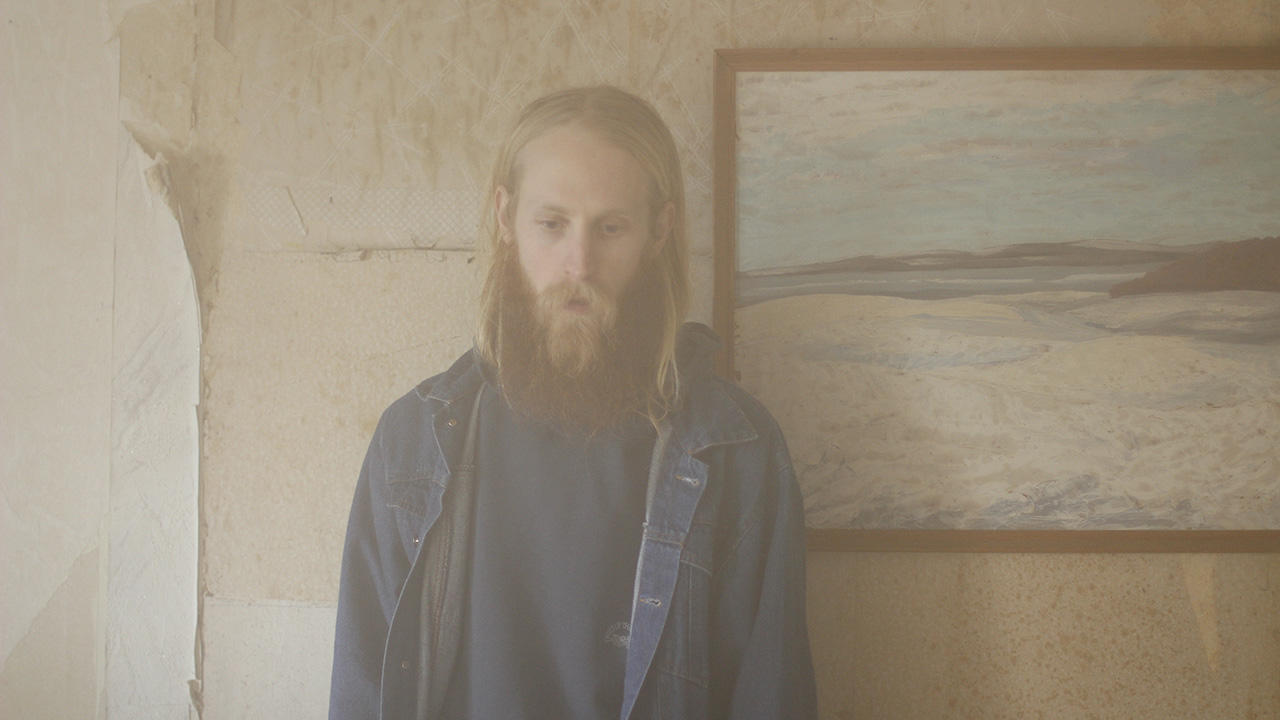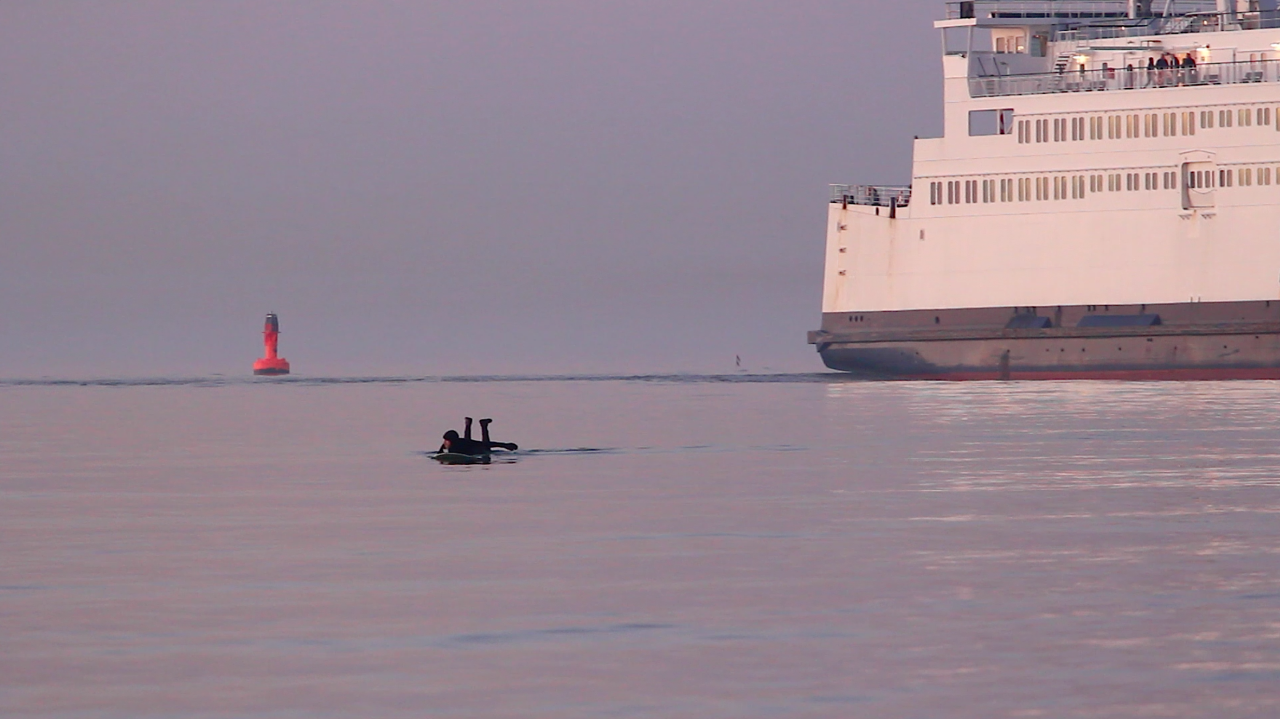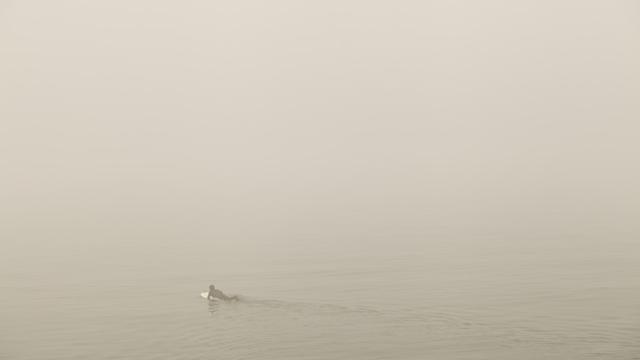Berlin lies hundreds of kilometres from the nearest ocean. But, that didn’t stop one determined man from discovering a rare local break, then teaching himself to surf it. This is his story.
Ira Mowen is an American artist living in the German city. He’s creating a documentary film about his experience finding and eventually surfing this wave. You can help him do that on Kickstarter.
IndefinitelyWild: How did a surfer end up in Berlin?
Ira Mowen: I didn’t go to Berlin to surf, that’s for sure. I didn’t really think through the whole moving to a new country thing. Back in 2005, while finishing up my studies at California College of the Arts in San Francisco, I met a German girl and fell in love. It so happened that she lived in Berlin, so I packed up my life and moved.
I was so blinded by love, the fact that I’d not be living within walking distance of surf never even crossed my mind. The relationship ended within a few weeks of my arrival, but I had no place to go back in California, so I just hung around. Luckily for me, I arrived at a time when being a starving artist in Berlin was extremely easy. For the next couple years, I enjoyed the cheap life Berlin had to offer, only getting my surfing fix in while visiting family over the holidays.

IW: What came first, the idea to find a local break or spotting the wave?
IM: Even though there’s no surf in Berlin, or coastline, finding a local break was actually a serious curiosity of mine. More than two years before spotting THE wave, I bought a small rundown cabin sitting on a lake in the woods outside the city. The cabin shared a wall with an ancient boathouse that had a couple heavy old windsurf boards in it. I began paddling around the lake, which is actually the river Spree. My idea was to find a peninsula with a shallow enough sandbar to catch the wake from passing cargo ships. I found a few spot, but the passing ships never went fast enough to produce anything good.
Then, at a party in 2010, some friends of mine starting talking about a surf spot just two hours north of the city. I asked if there was room in the car for me. There was and they even had an extra board for me! We drove up to a small fishing village on the Baltic to visit these rumoured waist-high waves produced by ships. And we managed to catch a couple.
Then, in 2011, I decided to give it one more look, exploring closer to the ship. My idea was that if I paddled out, as close as possible to it, I’d find the biggest wave. And I was right. That evening, with the winds offshore, I witnessed “The Grey Monster,” head-high, hollow and perfect.
I tried to find some documentation on the wave when I came home, but came up with nothing. How could this wave go unnoticed? I couldn’t believe it.
My excitement turned to panic when, during an email conversation with the ship’s owners, I found it would be replaced by a new ship that wouldn’t produce as large a wake in just four short months. Finding this out is what launched my quest — to document a ride on the soon-to-be-extinct German wave.
IW: Why not just get on a plane and fly to Hawaii?
IM: I’ve surfed in Hawaii, France, Costa Rica and Chile. But only on family vacations. The idea of travelling to surf now is too expensive and stressful. The total opposite of what I believe the spirit of surfing should be. Discovering the wave near my home in Berlin that I could visit whenever I wanted made the whole ordeal more attractive. I felt a connection to the land and it just felt like the natural thing to do.

IW: Describe the wave.
IM: It’s very similar to an ocean wave. It breaks between one and two hundred yards offshore and a ride could last anywhere between 30 seconds to a minute. Offshore wind or no wind is ideal.
There’s two unusual characteristics that make this wave extremely hard to catch: The first I like to call the “up river effect.” Every time the ship entered the harbour, it would suck all the water away from the beach, instantly dropping the tide three to four feet. This extreme pull of water would make paddling into the wave difficult because it was like paddling up a river. The second thing that made it hard to catch is that unlike ocean waves, there was only one wave per ship. So, if you paddle out and aren’t in the right place at the right time, you’ll miss it and you may not see another for a week or so.
The formation of the wave only occurred when the ship was driving at full speed through the harbour gates. Wind, boat traffic and who knows what else would slow it down more often than not. In the 150 times I paddled out, I only saw the wave six times. The stakes were high.

IW: How’d you study the wave?
IM: I had to be at the spot every single time it broke. For the entire winter, I could confidently say that I never missed one break. I was even out there after dark trying to spot them. During my first trips up to spot, I would either watch from the shore or paddle out on a surfmat. That was good for these first trips because it weighed almost nothing, so I could carry it on my 50cc moped. I started this research in November, 2011, yet it wasn’t until March 7th of the next year that I felt like I knew exactly where to wait to catch a big one.

IW: Did you ever consider giving up?
IM: I’m super stubborn. With so many failed attempts under my belt, there was always the underlying fear that I might never catch this wave. That reality was very preset during my quest and I had to shake that off before paddling out each time, making myself believe that this would be the one.
